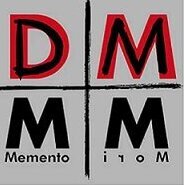Leaderboard
Popular Content
Showing content with the highest reputation on 03/01/2021 in all areas
-
Yeah agreed Colin, the company bought it to do some aluminum parts for Falcon Jet and gulfstream... Machine is really manufactured for light duty stuff. Thank you2 points
-
I program remotely 100% and I 99% put fixtures, vises, screws, dowel pins, etc in my files. If you leave it to the setup guys they will make you look bad. Every now and again i am tempted to leave that step out and sometimes i do. But, only if its real straight forward. I use a script that automatically merges in what i need for any specific job and that makes it much faster. Plus i have my setup sheets pretty dialed in. If i was setting up my own program i would not do all those steps though.2 points
-
Since many people have asked me to share how this works, I thought I would make a post about setting the Control Definition Default settings. Are you tired of your NC code changing whenever you update Mastercam? Why do your NC settings seem to get screwed up? You ran the "Migration Wizard", and things are still broken... Ok, so what's going on? ---> You didn't set the Control Definition Default Settings. It doesn't have to be this way. You can setup Mastercam to handle upgrading without causing you frustration, or the loss of any hair/sleep. Here is a step-by-step process for setting the Control Definition Defaults. What is a Control Definition, and why should you care?: First, what is a Control Definition File? A Control Definition is a file that Mastercam uses to store settings for controlling your NC code output. The CD (Control Definition) contains common settings for things like "Arc Formatting", and the settings for Sequence Numbers (N numbers), among other things. The idea behind the CD is that it gives the programmer the ability to adjust settings by using a Graphic User Interface, instead of having to make edits directly to your post processor. When it was originally conceived, the CD was created with the ability to link and control multiple post processors, and have separate settings for each one. This would give "administrators" the ability to make edits for multiple machines from within a single file. In practice however, nobody ever does this. Every shop that I've worked with uses a single MD, CD, and PST file, all with the same name. So even though a machine might share all the same settings with another machine in your shop, the "best practice" is to use a single MD/CD/PST name for each unique machine on your shop floor. When you create a new job in Mastercam, and load a "Machine Definition" file into your Ops Manager, Mastercam places a copy of your MD and CD into the Ops Manager. These "file copies" are specific to your individual Mastercam file, and are not "linked" back to the originals (or "library copies") of the files. To a certain extent, this does make sense. This convention allows you to make "individual" file changes. So for example, say you had a program that used a Right Angle Head, with a few specific tools. You could setup the "stations" with a RAH component, and have all of those options saved inside your individual Mastercam file. You wouldn't want all those modifications to be made to the "library copy" of your files; they are project specific. Another situation might come up where you are running out of memory for a specific program. For this individual file, it might make sense to disable Sequence Numbers, remove all the "Space characters", and output all of your Arcs using "R" values instead of IJK, just to save space. The CD allows you to do that, without changing the settings in the Library Copy of your CD... Are you with me so far...??? So in a nutshell, the CD contains user-select-able parameters that control some of the formatting of NC code output. Control Definition Defaults OK, so the CD contains settings that format output from the post. Great. Now we get to the issues... The main problem that I see people run into comes when they update to the next release of Mastercam. This problem occurs because the settings in the CD refer to a static file path. Say what? Yes. The settings that are stored inside the CD are stored for a specific post in a specific file location. Those settings are only valid for that exact post processor file name, in the exact folder location you specify. When you setup a new post processor, most users typically create (rename, whatever) a new post, and put it in a specific folder, local or network folder location. Ok, great. But then they go and "link" their CD to that Post Processor, and take the time to configure their CD. This is all well and good, except, that they don't know about the static file path issue. Every Control Definition file has a set of "Default Settings" that are used (you might have guessed), by default. That means that whenever you move your post file to a new folder location (this happens "by default", every time you upgrade Mastercam), the settings for the CD that link your "new" (updated) post processor will revert back to these "default" settings... "Aghhhh!!!!" . . . "WHY!!!!" I can hear the screams from all the frustrated users dealing with these upgrade issues... So, what can be done to solve the problem??? Setting the "Default settings for control type" Ok, start by opening one of your CD files in the Control Definition Manager. Click on the "drop down" arrow for selecting a Post in the post file list. At a minimum, you should have the file path and name of your currently "linked" post processor, and there will be at least one other entry in the list; "Default settings for control type". <--- These are the "default settings" that will get picked up, whenever Mastercam is updated to a new "major" version. So, lets say that you have spent a bunch of time tweaking all of the parameters for "your post". To import those settings to the "defaults", do the following: Open your CD file in the Control Definition Manager. Select the "Default settings for control type" in the "Post Processors" drop-down list. Select the "Tool" page in the Tree. (any page will work, I just picked one for the example.) Move your cursor below the controls, into the "gray area" of the page. Right-Click in the gray area, and you'll get a Right Mouse Button Menu that pops up. Choose "Import > All pages". This launches a "Open" dialog box. Mastercam is asking "which CD" do you want to import the settings from. By default, it will have the currently open CD set to the current file name in the dialog box. Just press "open", no need to re-select the file in the list... This opens a "Control Import - select the type and post key" dialog box. There will be a list with "your" post, the "default settings for control type", and possibly some other file paths, depending on how the post was originally setup, and if it has been "updated" previously. Choose "your post" in the list. Press the "ok" button. All of the settings from "your post" have now been imported into the "default settings for control type" in your CD. Press the "save" button. Doing that process will import all of your current post settings to the "default" settings for your CD. Now, whenever you update Mastercam, the CD will use the "default settings", which just happen to match your current post settings. You will never again have an issue with a Mastercam update changing the NC code output of your post... A few caveats: If you start by just simply taking a new CD file, and setting the "Default settings for control type", you never have to worry about "importing" any settings, since any post that you then link will pick up the "defaults" automatically. If you change any of the parameters for your current "library copy" of the CD, you should also make those changes to the "default settings", or you risk getting your current CD settings, and the "defaults", out of sync. If you do make any changes to your current linked post, just remember that you can "import" those changes to the default settings with the procedure above. Make sure you set the Default Settings for you CD in your current version of Mastercam, before you run the Migration wizard. I thought you could import CD settings from older versions of Mastercam .control files, but it doesn't seem to be working in X9. Hope that helps, Colin1 point
-
1 point
-
1 point
-
was taught in trade school that it's from full dia of the thread1 point
-
Why did you guys buy an unnecessary post? I mean you got the best possible post you could but still. You would have been better served putting that money towards a workstation and let CAMplete do what it is bad@$$ at doing. Collision checking and getting you good code. JM2CFWIW1 point
-
Yes CAV is Computer Aided Verification. Both listed are good choices and really going to comes down to what you want. Without CAV trail and error and tons of caution. Might take 5-10 times longer to prove out a program on a machine without CAV. Really going to come down to how comfortable the programmer gets with the machine. All they do every day in and day out they are better than me since I jump around between so many different machines. You get a feel for what works and what doesn't and where to be safe and where you can push it. CAV gives you that extra level of visibility without having to go to the machine and risk it. Even a program run through CAV I always tell people be safe never trust it till it have been ran through at least once. I get we need to get it done in a hurry, but one mistake or issue and it could turn into a major problem. No harm in being safe and cautious.1 point
-
If I was sub-contract programing I would always have it in my file as I don't want the operator or the company to assume anything. It is a good practice to have as much information as reasonably required in your file, someone else may open your file....your file should be self explanatory. All levels should be clearly named, all groups and operations named and all solids named. All tool holders should be properly defined within the file. Using ViewSheets is also a game changer of organization IMHO. Now if you employer comes in and says get this job programmed and to the machine in 30 minutes you may need to cut corners.1 point
-
Who is making this claim, your Q.C. dept or engineering? It is up to your engineering dept to tell you where to measure the depth from. There is a .026" difference in height from the top of the 5/8 round to the intersection of the threaded hole and the bar. If it were me I would drive both the drill and tap 0.1" deeper. The 0.25" is a minimum depth requirement so you could go 1/2" deep if you wanted to1 point
-
1 point
-
They sure do love roundabouts and connector roads. The ice can get bad too, but I have been fortunate enough to be able to work from home for most of our bad weather events this year. The one gnarly drive I've had so far this year was up to NH for the day. Most of the drive was plowed and salted, but the last ten miles or so was a little bit hairy. Fortunately I got a Subaru Forester for the AWD system, and have decent all season tires. Next year I will consider a dedicated set of winter tires, and I'd love to get studs. AWD with stud would be basically unstoppable, even on ice. But I'm not sure I'll be able to drive NE Speed on the Pike with studs.1 point
-
They mail us the camplete usb in a separate package. We've gotten them before the machines If that's really the case call them and ask them for a 30-day license to get you going1 point
-
Thanks for the help guys. It was the lead in/out that was too short.1 point
-
increase the flute length of your cutter and a lot of that will go away.1 point
-
Hardware is one thing. Software is the other elephant in the room. Head/Head Mills are brand-new to Haas, and they are finding that things which worked on their table/table machines do not just translate into Gantry machine motion as easily. Make sure you have the Haas Tech update the Control software to the latest release. The 5-Axis Head they are installing on the VR-11 is built by the same company that builds their heads for the GM-2. I know someone who has one of the first GM-2 machines off the line, and they have had similar issues. One of the recent software updates has helped immensely. These machines were designed so that Gene Haas could build more F1 parts in-house, rather than continuously buying the parts from suppliers. So keep that in mind. For the GM-2, you really get the sense that the machine was designed to trim carbon fiber panels, as it has high RPM's, but not much torque. I have not seen the specs for the VR-11 with the HSK spindle, but I wouldn't be surprised if it also had similar limitations. ***** Yeah, I just checked. Max Torque is 10.5 FT/LBS @ 12,000 RPM.0 points
Join us!
eMastercam - your online source for all things Mastercam.
Together, we are the strongest Mastercam community on the web with over 56,000 members, and our online store offers a wide selection of training materials for all applications and skill levels.










